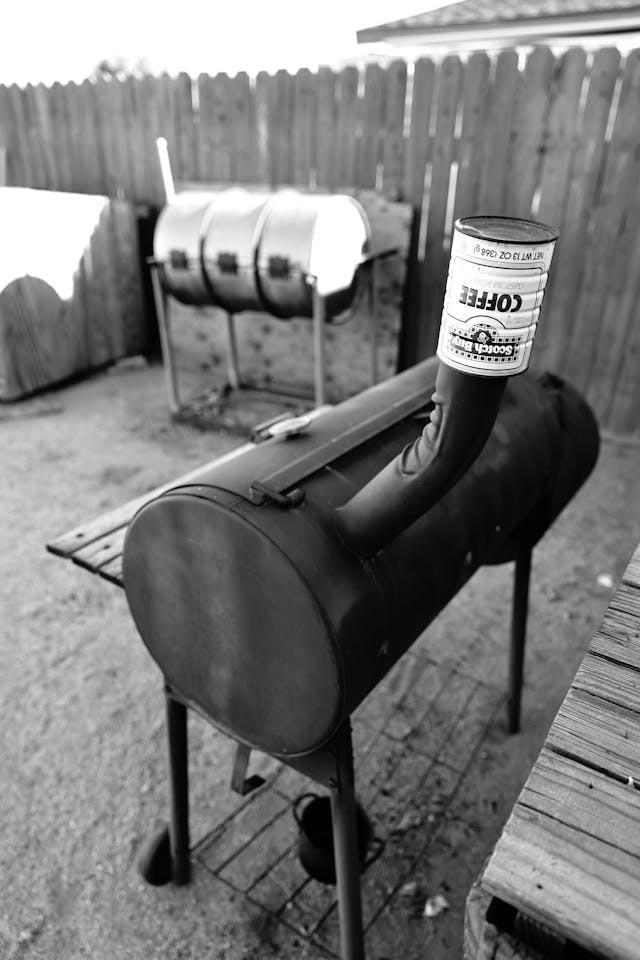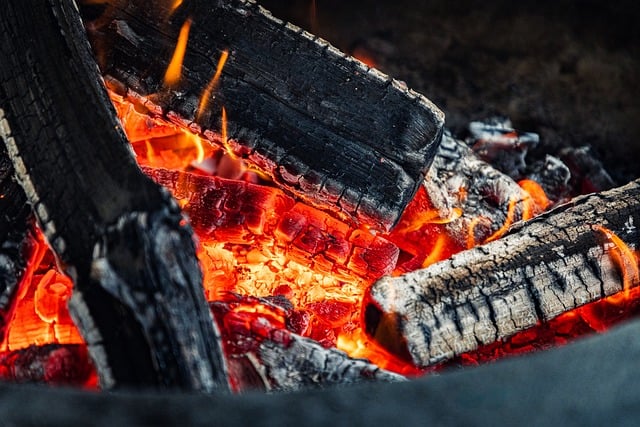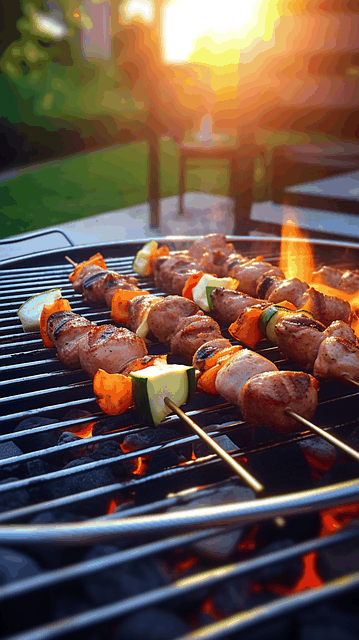Offset Smokers for Beginners: 7 Powerful Tips to Master Smoking
Offset smokers for beginners are the perfect way to achieve authentic, smoky barbecue flavors without breaking the bank. These classic smokers are prized for their ability to infuse meats with deep, rich smokiness, making them a favorite among grilling enthusiasts. While they may seem intimidating at first, learning how offset smokers work and understanding their unique benefits can make your barbecue journey both enjoyable and rewarding.
This guide aims to demystify offset smokers for beginners, offering insights into how they work, what features to consider, and how to get the best out of your smoking experience. Whether you’re just starting your barbecue journey or looking to up your game, mastering an offset smoker can elevate your cooking. Offset smokers require a little patience, but once you get the hang of it, they produce some of the most flavorful smoked meats imaginable. From tender briskets to juicy ribs, the slow and steady method used by these smokers helps to bring out the best in your ingredients.
What is an Offset Smoker?
An offset smoker is a type of barbecue cooker that separates the firebox from the main cooking chamber. This design allows indirect heat and smoke to flow from the firebox into the cooking area, cooking meat slowly and evenly while infusing it with rich, smoky flavors.

How does an offset smoker work?
Offset smokers work through the process of indirect heat transfer. You build a fire in the firebox, and heat and smoke are channeled through a small opening into the cooking chamber. This setup helps to maintain a consistent, low-temperature environment ideal for slow cooking.
Key Components of an Offset Smoker
The firebox is where you build and maintain the fire, while the cooking chamber is where the meat is placed. In between these two components is a vent or chimney that allows smoke to flow through, imparting flavor to the meat.
Firebox
The firebox is critical in an offset smoker, as it houses the heat source. Whether using wood, charcoal, or a combination of both, maintaining a steady fire is essential for consistent smoking.
Cooking Chamber
This is where the magic happens. The cooking chamber holds the meat and is exposed to the indirect heat and smoke generated in the firebox, ensuring a low-and-slow cooking process.
Chimney
The chimney plays a vital role in controlling airflow, which affects both the temperature and the level of smoke in the cooking chamber. Proper management of the chimney can make a big difference in the quality of your smoked meats.
Dampers
Dampers control the airflow into and out of the firebox and cooking chamber. Adjusting the dampers allows you to regulate the internal temperature of the smoker and control how much smoke comes into contact with your food.
Types of Fuel for Offset Smokers
Offset smokers can use various types of fuel, including charcoal, wood, and pellets. Each type has its pros and cons, affecting flavor, heat management, and overall ease of use.
Charcoal
Charcoal is one of the most popular fuels for offset smokers, providing a consistent heat source and a moderate level of smokiness. It’s easy to light and burns for long periods.
Wood
Wood is the preferred fuel for many smoking enthusiasts because it produces the most authentic, rich smoky flavor. Different types of wood, like hickory, oak, and mesquite, add unique flavors to the meat.
Pellets
Wood pellets are compressed wood pieces that are convenient and efficient for smoking. While not as traditional as wood or charcoal, they offer consistency and easy temperature control.
Setting Up Your Offset Smoker
Setting up your offset smoker is critical for ensuring an even cook. Start by positioning it on a level surface, away from wind or anything flammable. Ensure the firebox and cooking chamber are clean before you start smoking.
Seasoning Your Smoker
Before you use your offset smoker for the first time, it’s important to season it. This involves coating the inside of the smoker with oil and letting it run at a high temperature for several hours. This process helps to burn off any residues and creates a protective layer inside the smoker.
Building the Fire
Building a good fire is key to successful smoking. Start with a small pile of charcoal or wood in the firebox, and use a chimney starter for an efficient, smokeless ignition. Once the coals are glowing, add more fuel to reach your desired cooking temperature.
Controlling Temperature in an Offset Smoker
Temperature control is one of the most challenging aspects for beginners. Monitoring the fire and adjusting the dampers regularly will help maintain consistent temperatures, ideally between 225°F and 275°F for low and slow cooking.
Using Thermometers
Built-in thermometers can be inaccurate, so it’s best to use a digital meat thermometer or an external temperature gauge to ensure precise readings.
Managing Heat Zones
Offset smokers often have hot spots near the firebox, so consider rotating your food periodically or using heat shields to create an even cooking environment.
Smoking Meat: The Basics
The goal of smoking is to cook meat at a low temperature over a long period while allowing the smoke to infuse the meat with flavor. Patience is key, as smoking can take anywhere from several hours to a full day depending on the size of the meat and temperature.
Best Meats for Smoking
Certain cuts of meat are better suited for smoking, particularly those that benefit from slow cooking to become tender and juicy. Brisket, ribs, pork shoulder, and whole chickens are all great options for beginner smokers.
Using Rubs and Marinades
Rubs and marinades add layers of flavor to smoked meat. Dry rubs are typically a mix of spices and sugar, while marinades include liquid ingredients like vinegar or oil to tenderize the meat before cooking.
Adding Flavor with Wood
Hickory and mesquite offer strong, bold flavors, while fruitwoods like apple or cherry provide a sweeter, milder taste. Experimenting with wood types can give your barbecue its own signature flavor.
Common Mistakes Beginners Make
It’s easy to make mistakes when first learning to use an offset smoker. Common issues include not preheating the smoker, using too much or too little fuel, and failing to manage airflow. Don’t get discouraged, as learning these nuances will come with practice.
Not Maintaining Temperature
One of the most common mistakes is letting the temperature fluctuate too much. Keep a close eye on the fire and adjust dampers as necessary to maintain consistent heat.
Overloading the Firebox
Adding too much fuel can result in overly high temperatures and bitter smoke. It’s better to start small and add fuel gradually.
Cleaning and Maintenance
Regular cleaning and maintenance will extend the life of your offset smoker. Clean the grates, firebox, and chimney after each use to prevent grease buildup, which can affect performance and flavor.
Ash Management
After each smoking session, make sure to remove ash from the firebox to ensure proper airflow for your next cook. Ash buildup can block vents and cause temperature spikes or poor combustion.
Best Offset Smokers for Beginners
If you’re in the market for your first offset smoker, there are several beginner-friendly options available. Look for a model that balances affordability with quality, such as the Oklahoma Joe’s Highland or the Dyna-Glo Wide Body Offset Smoker.
Oklahoma Joe’s Highland
Known for its solid construction and large cooking space, the Oklahoma Joe’s Highland is a great choice for beginners looking to invest in a durable smoker.

Dyna-Glo Wide Body
This model is more affordable and offers a generous cooking capacity, making it ideal for beginners who want to try smoking without a significant upfront investment.

Conclusion
Offset smokers provide a traditional and authentic way to enjoy smoky barbecue. While they may seem complicated at first, understanding their design, fuel options, and proper techniques will make your smoking experience much more rewarding. The key to success with an offset smoker lies in mastering temperature control, managing fuel, and choosing the right cuts of meat.
With a little practice, patience, and experimentation, beginners can quickly become proficient with their offset smokers. Learning to control airflow, adding just the right amount of smoke, and cooking meats to perfection will become second nature as you gain more experience. In the end, the journey with an offset smoker is about more than just cooking. It’s about the process, the anticipation, and the satisfaction that comes from mastering a time-honored tradition.







One Comment